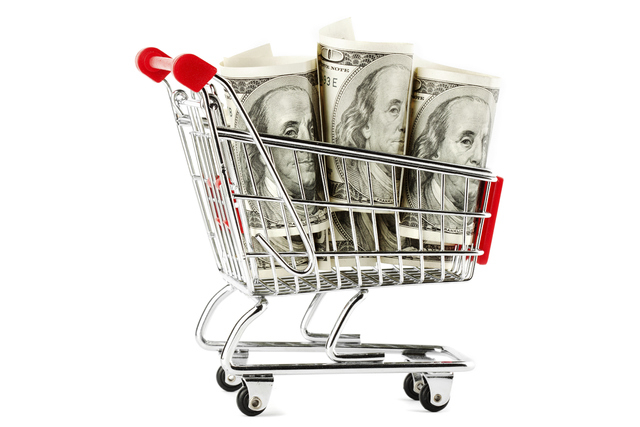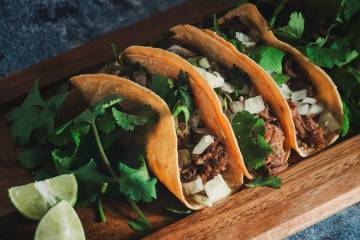Savvy shoppers notice skyrocketing supermarket prices
Sue Lednicky has been watching prices go up at her local supermarket.
“It’s kind of depressing, that’s for sure,” she said.
Jean Hertzman has seen them going up at the wholesale level.
“I ordered broccoli last week, from one of our produce companies,” she said. “They were large-sized bunches, but the price was over $4 a bunch. I would’ve expected maybe $3.”
One of the biggest increases has been in the price of limes. Hertzman said she recently was with a friend who’s a buyer for beverage service at a local restaurant and club and they were $125 a case — up from $60 or $75 not long ago.
“That’s been very quick,” Hertzman said.
“And shrimp prices have been totally on the rise,” she added.
They’re not imagining things. A Bloomberg News study of world food prices in early April found they’d reached a 10-month high in March, in “everything from beef to wheat.”
So what gives? Stephen Brown, an economist and director of the Center for Business and Economic Research at the University of Nevada, Las Vegas, said there are numerous factors.
“There’s a seasonal element to food costs,” Brown said. “Prices tend to be higher when we’re farther away from the harvest season.”
Hertzman, an associate professor and assistant dean of operations and academics in the William F. Harrah College of Hotel Administration at UNLV, said lime prices were affected by disease in Mexico and shrimp by problems with shrimp farms in Thailand.
“We get so much of our fish farmed now, from Thailand and China,” she said. “So now that that supply’s not available, the supply from everywhere else is going up in price.”
For some types of food — meat, for example — the reason is more complicated.
Livestock prices, Brown said, are directly affected by the cost of grain, which has been rising during the past few years because of drought in some of the major grain-producing areas of the United States and because a lot of corn has been diverted to the production of ethanol.
“What happens when grain prices first start going up, livestock prices go down because farmers start liquidating their herds because they don’t want to pay the additional price for the feed,” he said. “Then they start going up, because there’s less livestock. And so the generally higher grain prices we’ve had the last few years are finally making their way through to livestock prices.” And, he said, because the livestock prices have been artificially low, we notice even more when they start going up.
“If you look at both corn and wheat,” he said, “they’re used throughout so much of everything we consume that their prices affect just about all of the other foods you can think of. Animals eat grain; corn is used to make corn syrup, which is used in soft drinks” and many, many other products.
And drought conditions have affected far more than the price of grain.
“We had insufficient rain in California,” Brown said. “A lot of our produce comes from California — not just here in Nevada, but nationwide. The drought there is affecting production. If we look at the lower San Joaquin Valley, a lot of the farmers there are on water rationing, which is affecting our crops.”
And it’s inevitable that price increases will be passed down and noticed by consumers in both markets and restaurants.
“The grocery-store business is highly competitive and operates on very low profit margins,” Brown said. “Basically, the grocery stores are going to be forced to pass all of those costs on to the consumer.”
In restaurants, he said, a large portion of costs is in food preparation and delivery, and not so much in direct food costs. But Hertzman said restaurants already are reeling from the dismal economy of the past several years.
“Restaurants have been so resistant, during the recession, to raising their menu prices because we didn’t want to lose guests,” she said. “It’s going to be tough, because already restaurants have reduced portion sizes, adding more vegetables and sides to a plate and a smaller protein size — which is healthier, anyway. It’s going to be very interesting to see what happens next, if we’ll see a reduction in portion sizes. Or, I think we’ll see at this point some rise in the price of restaurant menus, especially for people who focus on the steakhouses. They’re not going to be able to absorb the increase in costs.”
As for limes, she said, they just won’t be used as much, with other types of citrus fruits being substituted, which has already started among some larger food-service operations including airlines.
Lednicky, who’s a nutrition educator with the University of Nevada Cooperative Extension, said that, surprisingly, she hasn’t gotten any complaints about rising food costs from consumers.
“I think they’re kind of at the point that they don’t know what to do,” she said.
Lednicky, though, has noticed the increases, and she does know what to do.
“Every time I go and I want to get something, if it costs too much, I just won’t buy it,” she said. “There are certain things I just won’t buy anymore.”
“I won’t pay that much for bacon,” she said. “It’s not a healthy food anyway, so I figure why should I spend the money for it?
“Fruits and vegetables I used to buy, I wait until they’re on sale. I’m just really careful with what I buy and how much I buy, so I don’t waste much. I limit myself and I try to use every bit of it. I go more often, so I can be sure I’m not wasting as much.”
Contact reporter Heidi Knapp Rinella at hrinella@reviewjournal.com or 702-383-0474.




























